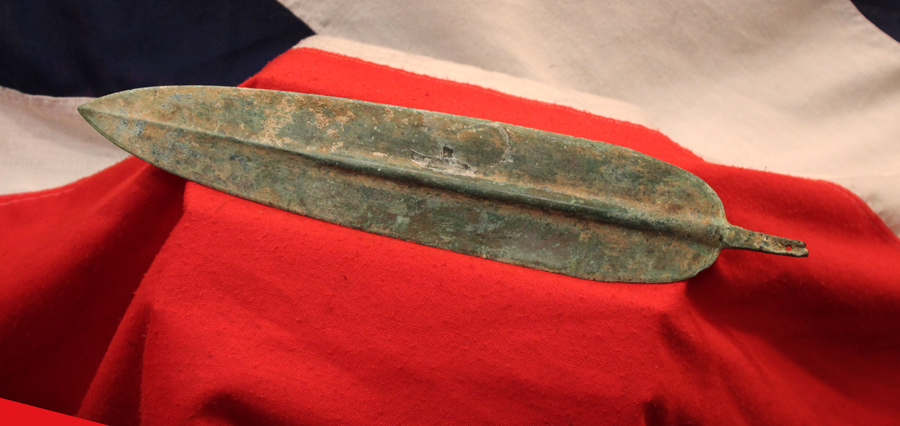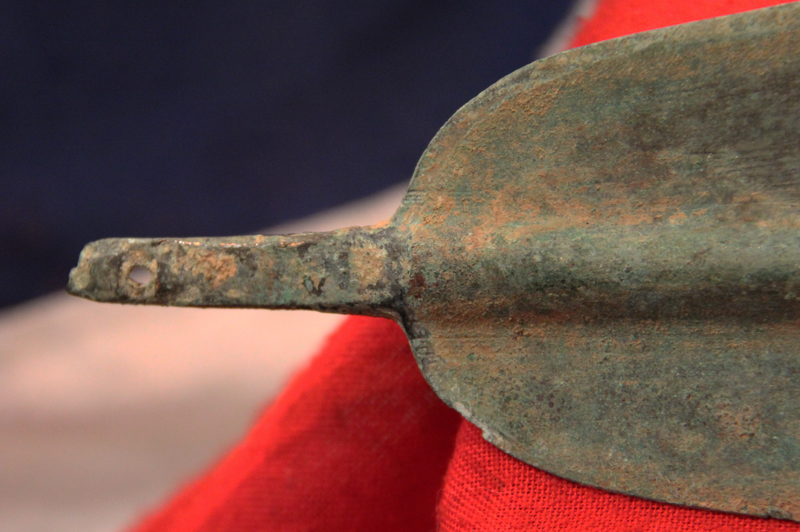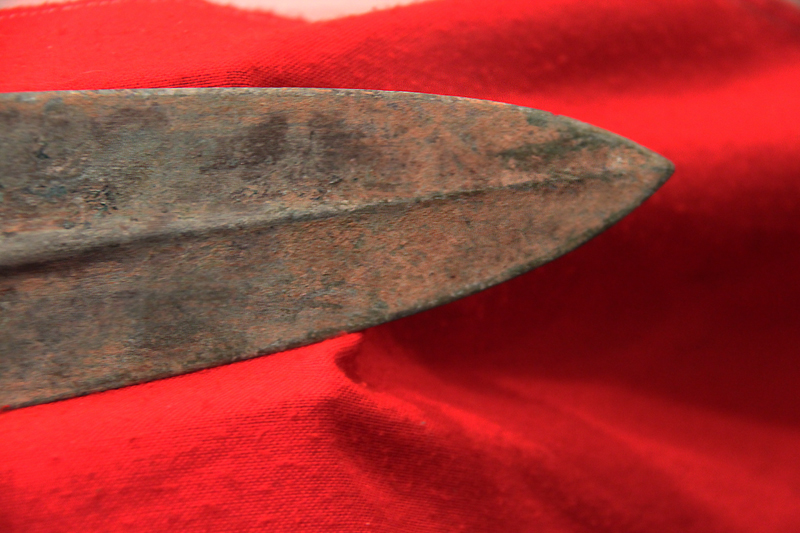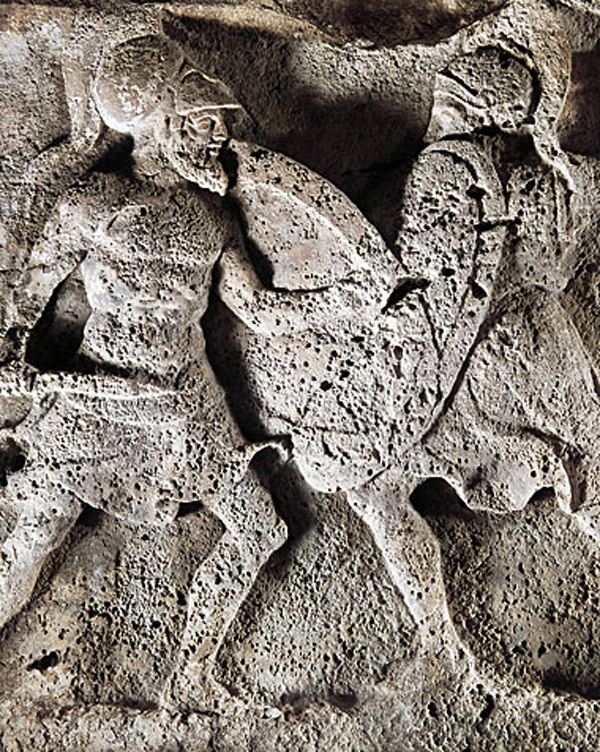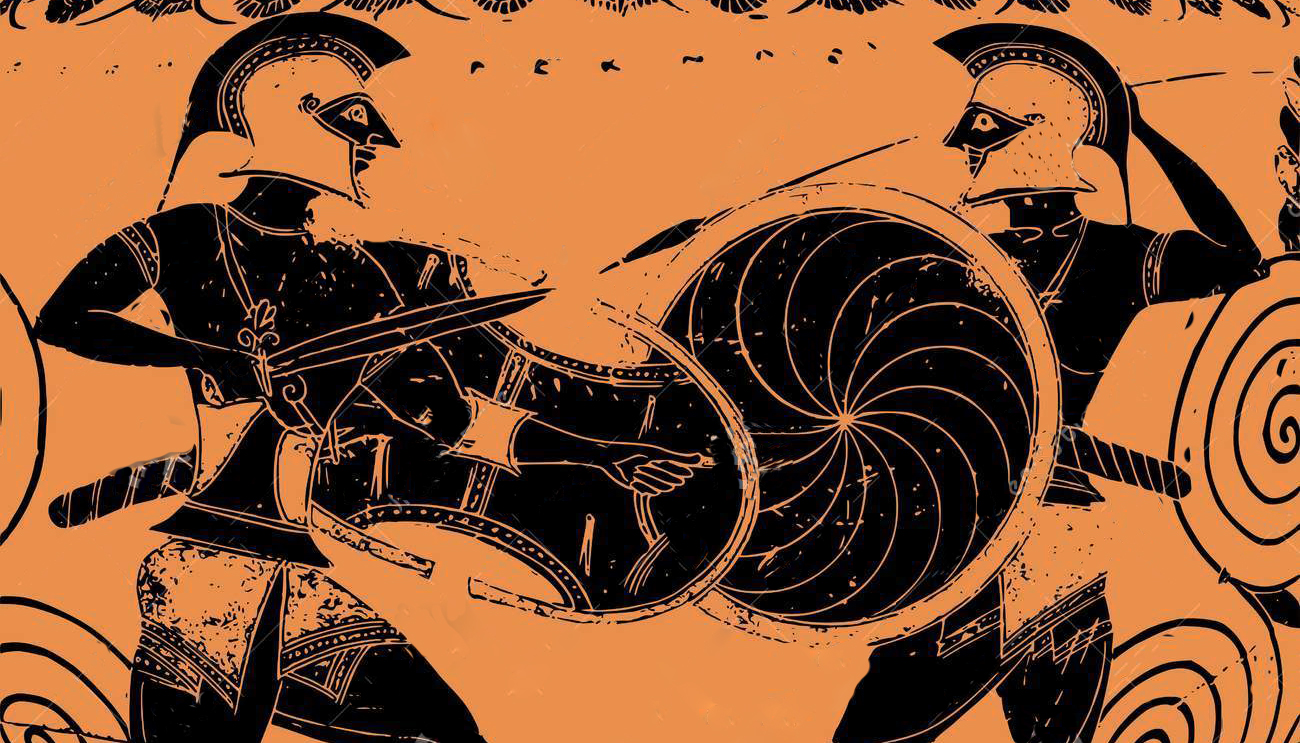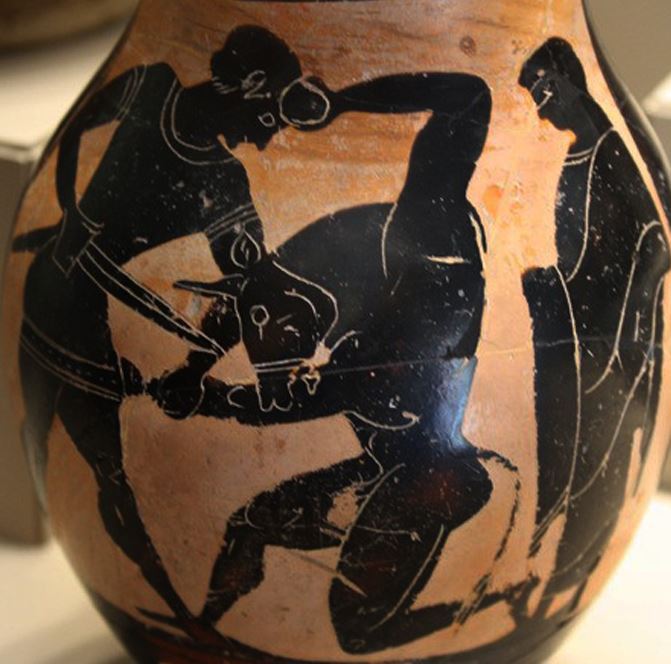A Beautiful and Ancient Original Greek 'Leaf Shaped' Bronze Sword, 1200 BC, Around 3200 Years Old, From the Era Known In The Days of Homer as The 'Heroic Age'
A Superb ancient Greek bronze age sword blade, from the ancient pre-history period 'Heroic Age', with fabulous areas of crystallized malachite blue/green patina. From the era of the Mycenaean Greek Trojan Wars. in overall fabulous condition. The Hilt would have been made from organic material such as horn bone or wood, that never survives once buried for the three millennia since it was used in war. So all that remains is the bronze blade's tang. The bronze for this blade was likely made from the Cretan copper mines, as an alloy, with an element of added tin.
The story of the Trojan War the Bronze Age conflict between the kingdoms of Troy and Mycenaean Greece straddles the history and mythology of ancient Greece and inspired the greatest writers of antiquity, from Homer, Herodotus and Sophocles to Virgil. Since the 19th-century rediscovery of the site of Troy in what is now western Turkey, archaeologists have uncovered increasing evidence of a kingdom that peaked and may have been destroyed around 1,180 B.C. perhaps forming the basis for the tales recounted by Homer some 400 years later in the Iliad and the Odyssey. According to classical sources, the war began after the abduction (or elopement) of Queen Helen of Sparta by the Trojan prince Paris. Helen's jilted husband Menelaus convinced his brother Agamemnon, king of Mycenae, to lead an expedition to retrieve her. Agamemnon was joined by the Greek heroes Achilles, Odysseus, Nestor and Ajax, and accompanied by a fleet of more than a thousand ships from throughout the Hellenic world. They crossed the Aegean Sea to Asia Minor to lay siege to Troy and demand Helen’s return by Priam, the Trojan king. The siege, punctuated by battles and skirmishes including the storied deaths of the Trojan prince Hector and the nearly-invincible Achilles, lasted more than 10 years until the morning the Greek armies retreated from their camp, leaving a large wooden horse outside the gates of Troy. After much debate (and unheeded warnings by Priam?s daughter Cassandra), the Trojans pulled the mysterious gift into the city. When night fell, the horse opened up and a group of Greek warriors, led by Odysseus, climbed out and sacked the Troy from within. After the Trojan defeat, the Greeks heroes slowly made their way home. Odysseus took 10 years to make the arduous and often-interrupted journey home to Ithaca recounted in the Odyssey. Helen, whose two successive Trojan husbands were killed during the war, returned to Sparta to reign with Menelaus. After his death, some sources say she was exiled to the island of Rhodes, where a vengeful war widow had her hanged.
The Greek Heroic Age, in mythology, is the period between the coming of the Greeks to Thessaly and the Greek warriors' return from Troy after their return with Helen of Troy. The poet Hesiod (fl. c. 700 BCE) identified this mythological era as one of his five Ages of Man. The period spans roughly six generations; the heroes denoted by the term are superhuman, though not divine, and are celebrated in the literature of Homer and of others, such as Sophocles, Aeschylus and Euripides.
The Greek heroes can be grouped into an approximate mythic chronology, based on the stories of events such as the Argonautic expedition and the Trojan War. Over the course of time, many heroes, such as Heracles, Achilles, Hector and Perseus, came to figure prominently in Greek mythology.
Early heroes
Many of the early Greek heroes were descended from the gods and were part of the founding narratives of various city-states. They also became the ancestors of later heroes. The Phoenician prince Cadmus, a grandson of Poseidon, was the first Greek hero and the founder of Thebes.
Perseus, famous for his exploits well before the days of his great-grandson, Heracles, was the son of Zeus. Perseus beheaded the Medusa, saved Andromeda from the sea monster Cetus, and was the legendary founder of Mycenae.
Aeacus was also a son of Zeus. Bellerophon was descended from the nymph Orseis. Oenomaus, king of Pisa, in the Peloponnese, was the son of Ares.
Among these early heroes the three - Cadmus, Perseus and Bellerophon - were considered the greatest Greek heroes and slayers of monsters before the days of Heracles.
Of course, despite the Age of Heroes and the time of the Gods of Olympus, being based almost entirely on mythology, apart from the actual city of Troy, which is now proved to be not a myth, the real warriors that lived during that age and time, in ancient pre-history, actually existed, and this is their very form of sword, and one that they would have used.
Photo in the gallery of an Attic black figure vase that shows Theseus killing the Minotaur of the Cretan labyrinth with an identical pattern of Greek sword. A feminine figure looks on from the right, possibly Ariadne. Late 6th, early 5th century BCE. (Archaeological Museum, Milan). See discussion in Branigan, K. Aegean Metalwork of the Early and Middle Bronze Age, Oxford, 1974, p.8-21. `15.5 inches long overall
Code: 22103
2250.00 GBP


